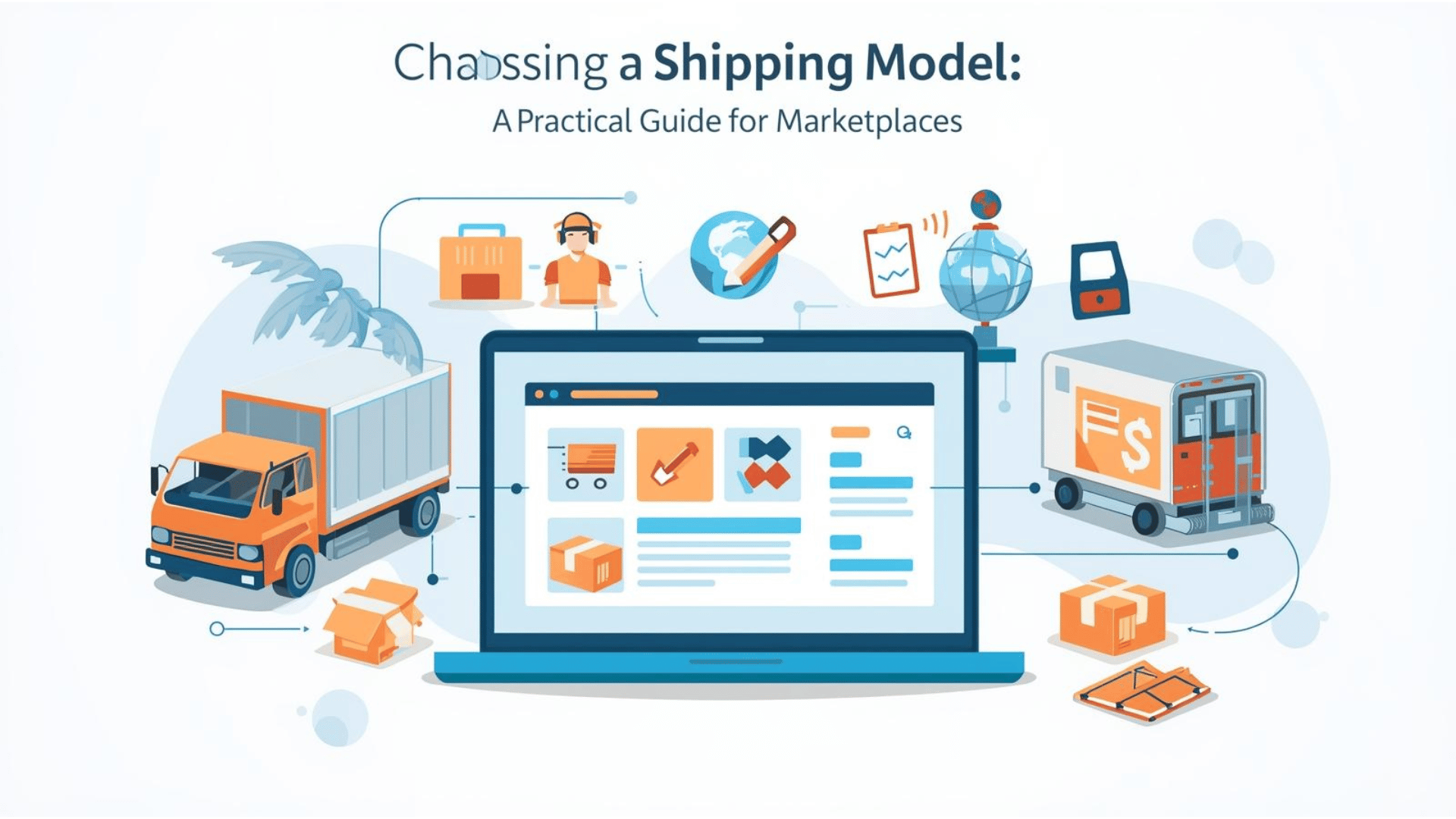1. What is WCFM Marketplace?
WCFM Marketplace is a free and feature-rich WordPress plugin that transforms WooCommerce into a fully functional multi-vendor marketplace. Vendors can run their stores from a frontend dashboard, while admins manage overall policies, commissions, and payments in the backend.
Unlike plugins such as Dokan or WC Vendors, WCFM provides a comprehensive set of tools in the free version—features that often require premium add-ons elsewhere.
👉 Check out the WCFM plugin on WordPress.org.
2. Who Should Use WCFM (and When)?
If you’re planning a marketplace like Etsy, eBay, or a niche directory of local businesses, WCFM can be a great fit. It’s ideal for:
- Niche marketplaces: organic products, handmade crafts, local services.
- Booking/subscription-based stores: coaching platforms, rental marketplaces.
- Multi-currency markets: selling globally with complex tax and shipping rules.
When comparing Dokan vs WCFM, many users prefer WCFM for lower total cost of ownership since many features come built-in.
3. Architecture at a Glance
WCFM’s architecture relies on two core components:
- WCFM Marketplace – the plugin that powers vendor commissions, shipping, and payouts.
- WCFM Frontend Manager – the interface vendors use to manage products, coupons, orders, and support tickets.
Instead of relying heavily on WordPress backend, vendors interact with an intuitive dashboard. Learn more about WCFM Frontend Manager.
4. Commission Setup – How Money Flows
Setting up commissions is central to any marketplace.
Supported Models
- Percentage-based
- Fixed fee
- Percentage + fixed fee
- By vendor sales volume
- By product price
Advanced Adjustments
You can configure whether commissions account for taxes, shipping costs, or coupon deductions.
Real Examples
- 15% category fee for electronics.
- Fixed $5 + 5% per order for subscription boxes.
- Lower commissions for “trusted vendors” to incentivize loyalty.
👉 WooCommerce coupons guide shows how discounts interact with commissions.
5. Withdrawal and Payment Setup – Getting Vendors Paid
Withdrawal Rules
- Vendors request withdrawals (manual or auto-approved).
- Admin can set minimum withdrawal thresholds or waiting periods for refund protection.
Payment Gateways
Supported options include PayPal, Stripe, Skrill, Bank Transfer, plus all major WooCommerce gateways.
Best Practices
- Weekly settlements via Stripe Connect.
- Manual approvals for high-risk categories.
- Reconciliation using PayPal Payouts.
6. Shipping Setup – Balancing Control & Cost
Shipping is often a sticking point in marketplaces. WCFM offers:
- Zone-based shipping (flat rate, free, local pickup).
- Country/state-level shipping.
- Weight-based shipping.
- Vendor overrides for admin shipping rules.
Example: Vendors in the U.S. can set $5 flat shipping, while EU vendors use weight-based pricing.
👉 WooCommerce shipping zones and ShipStation integration can further automate logistics.
7. Review Management – Building Trust
Reviews directly influence buyer decisions.
- Vendors and admins can manage store and product reviews.
- Reviews can be auto-approved or held for moderation.
- You can define rating categories (quality, shipping, communication).
Properly managed reviews boost marketplace credibility and can earn Google review snippets.
8. Refund System – Clear Rules, Fewer Disputes
Refunds are handled through vendor requests, subject to admin approval.
- Vendors can request full or partial refunds with reasons.
- Admin defines refund thresholds (e.g., 14 days).
- All refunds are processed manually for control.
9. Store Policies – Setting Expectations Upfront
WCFM lets vendors set policies for:
- Shipping
- Refunds
- Cancellations/returns/exchanges
Policies can apply per product or sitewide. These policies also appear in invoices, reducing disputes.
👉 See examples of strong store policies.
10. Customer Support – Helping Buyers Quickly
Vendors can add:
- Support email
- Phone number
- Address
This information appears in order details and invoices, ensuring buyers can reach vendors easily.
For advanced workflows, connect tools like Zendesk or Help Scout.
11. Vendor Onboarding & Registration
Admins can:
- Approve vendors automatically or manually.
- Add custom fields to registration (tax ID, category preferences).
- Provide an onboarding wizard for store setup.
This keeps vendor entry structured and consistent.
12. Vendor Dashboard & Capabilities
From the frontend dashboard, vendors can:
- Manage products, orders, refunds, and shipping.
- Set coupons and discounts.
- Access sales analytics.
- Add staff with controlled permissions
13. Catalog, Stock & Single-Product Multi-Vendor
Key catalog features:
- CSV product import/export.
- Bulk actions (price updates, stock changes).
- Multiple vendors selling the same SKU (ideal for competitive categories).
14. Analytics & Reporting – What to Track
WCFM provides reports for:
- Vendor-level sales
- Stock levels
- Coupon performance
- Refund activity
Admins can monitor marketplace health, while vendors only see their own data.
👉 Use WooCommerce Analytics and GA4 ecommerce for advanced tracking.
15. Apps, Themes & Compatibility
- Mobile apps: WCFM vendors can manage stores on the go.
- Themes: Works with any WooCommerce-compatible theme.
- No official WCFM theme, but many third-party themes integrate well.
16. Pricing & Total Cost of Ownership
- Free core plugin includes major features.
- Paid add-ons start at $11/year.
- Full bundle starts at ~$168/year for two sites.
By contrast, Dokan’s enterprise plan is $999/year. WCFM often delivers better value for small-to-medium marketplaces.
👉 Dokan pricing for comparison.
17. Implementation Roadmap
Launching with WCFM can follow a simple 6-step roadmap:
- Discovery & requirements gathering.
- Sandbox setup and vendor dashboard testing.
- Configure commissions, payments, shipping.
- Vendor onboarding and policy setup.
- UAT (User Acceptance Testing) with real transactions.
- Go-live and 30-day hypercare with close monitoring.
Risk checklist: commission edge cases, refund workflows, vendor disputes, and compliance (VAT, GST, US 1099).
Common questions about the WCFM marketplace:
Is WCFM Marketplace free?
Yes, the core plugin is free. Paid add-ons are optional for advanced needs.
Which payment gateways work with vendor payouts?
PayPal, Stripe, Skrill, bank transfers, and more via WooCommerce gateways.
Can vendors set their own shipping?
Yes, zone, country, and weight-based options are supported.
How do refunds work?
Vendors submit requests, admins approve, and refunds are processed manually.
Can multiple vendors sell the same product?
Yes, WCFM allows a single product to be listed by multiple vendors.
Final Thoughts
WCFM Marketplace is one of the most powerful and cost-effective solutions for building a WooCommerce multi-vendor site. With extensive commission options, withdrawal rules, shipping flexibility, and built-in review and refund management, it helps admins and vendors alike.If you’re planning to build or migrate a marketplace, WCFM deserves serious consideration—especially if you want enterprise-level features without enterprise-level pricing.




